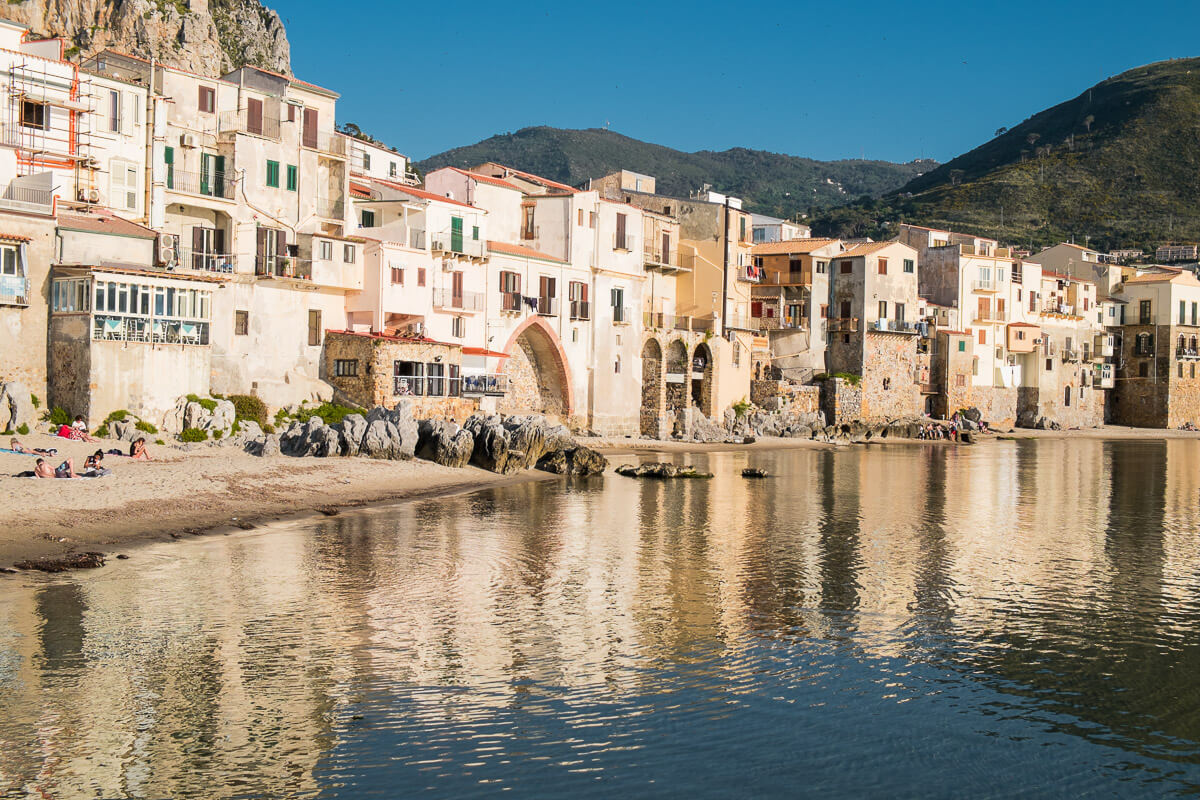Cefalù is one of Sicily’s most popular beach destinations thanks to its sandy beach and atmospheric medieval town.
It’s one of Italy’s most scenic coastal towns, and one of the main tourist hotspots in the west of Sicily (the only rival to Taormina in the east).
But what’s it really like? Here’s a quick guide to what you can expect from a trip to Cefalù.
Where is it?
Cefalù is in the middle of Sicily’s north coast, around 70km east of Palermo. The journey takes 1-1.5 hours on the train.
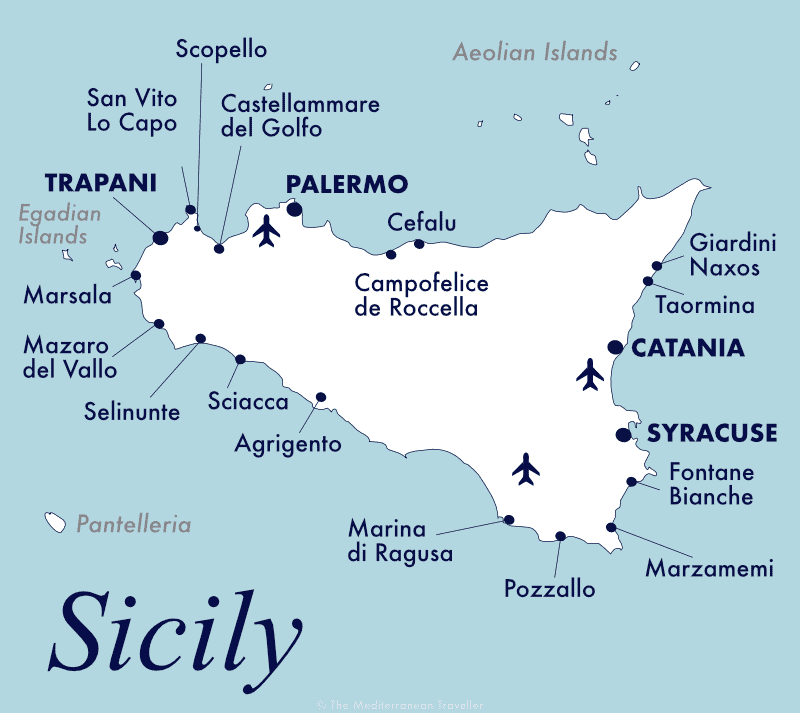
What’s the vibe like?
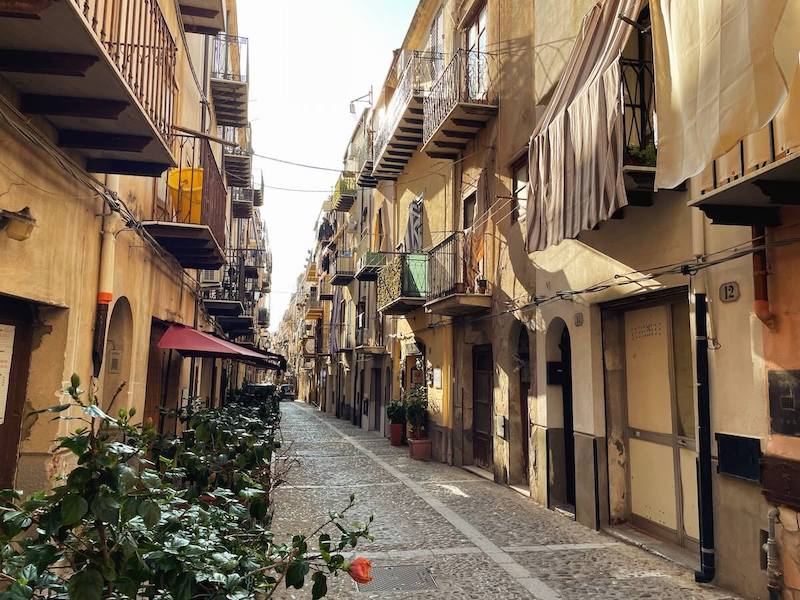
Cefalù is a bustling coastal resort which draws in both locals and internationals with its handsome old town and large sandy beach.
It’s popular as a day trip destination as well as a base for a longer holiday. Being just over an hour from Sicily’s capital, it unsurprisingly gets very busy at weekends and completely packed in the peak summer months.
The vibe is a mix of traditional-Italian-summer-holiday meets cosmopolitan-romantic-break. It does also sometimes appear in UK package holiday operator brochures.
The old town’s charming grid of narrow streets is packed with appealing restaurants, bars for your aperitivo, shops selling all types of Italy-themed souvenirs (you can buy lemon anything), and tour agencies. It’s an easy place to be in terms of tourist infrastructure if you don’t mind the crowds.
Cefalù sits at the foothills of the steep and green mountains of the Madonie National Park which gives it a lusher feel compared to other spots in Sicily. It can feel very humid but the sunsets and views are spectacular.
The newer parts of town are more functional with typical apartment blocks.
The main landmarks are the cathedral and Cefalù Castle which squats atop La Rocca, a vertical limestone cliff overlooking the town.

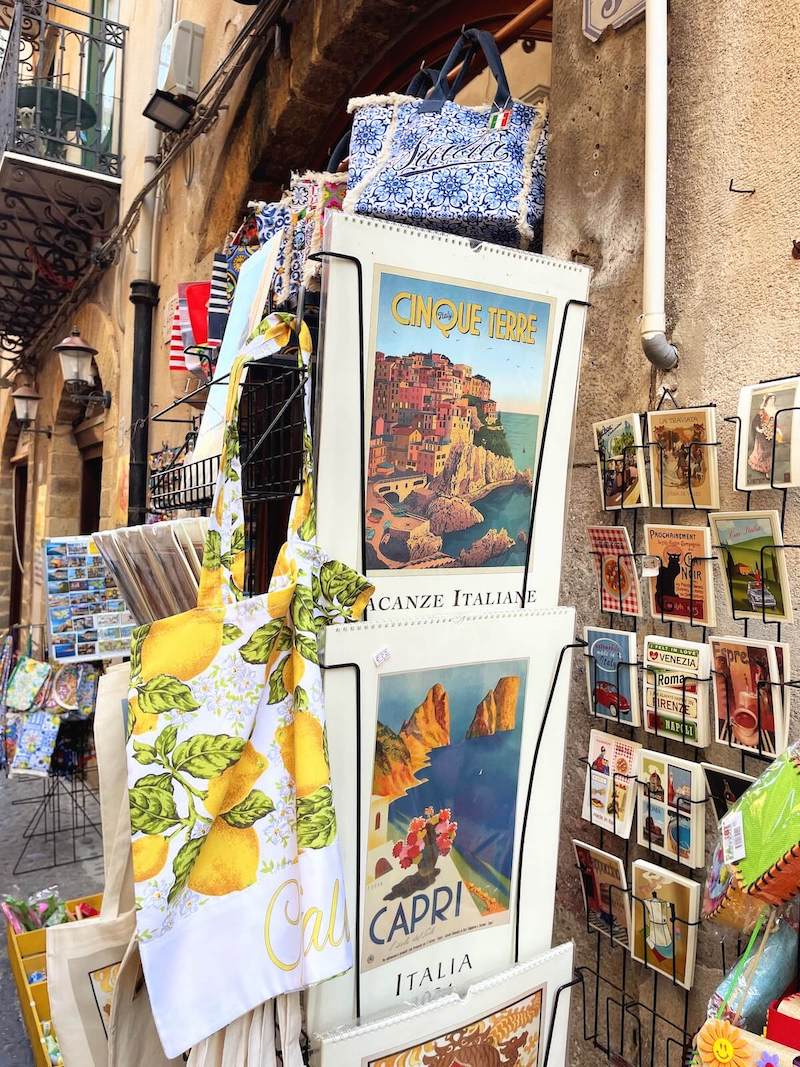
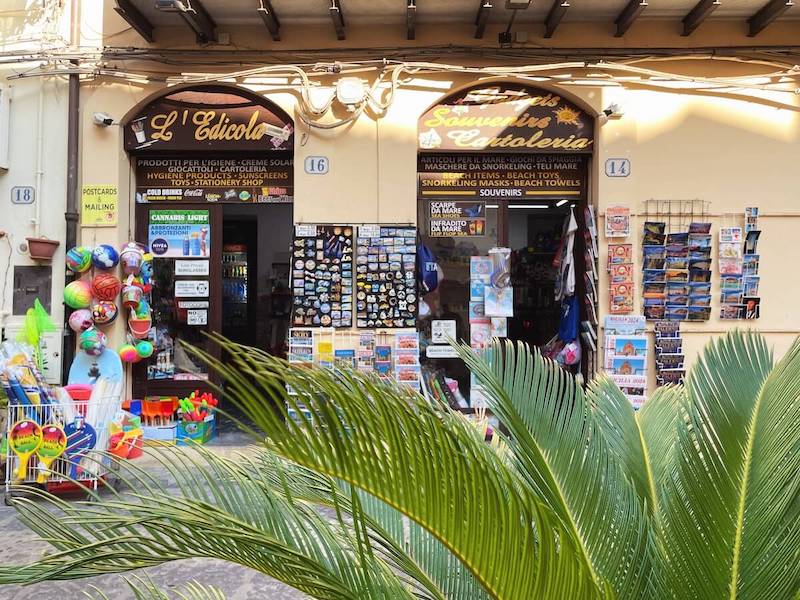


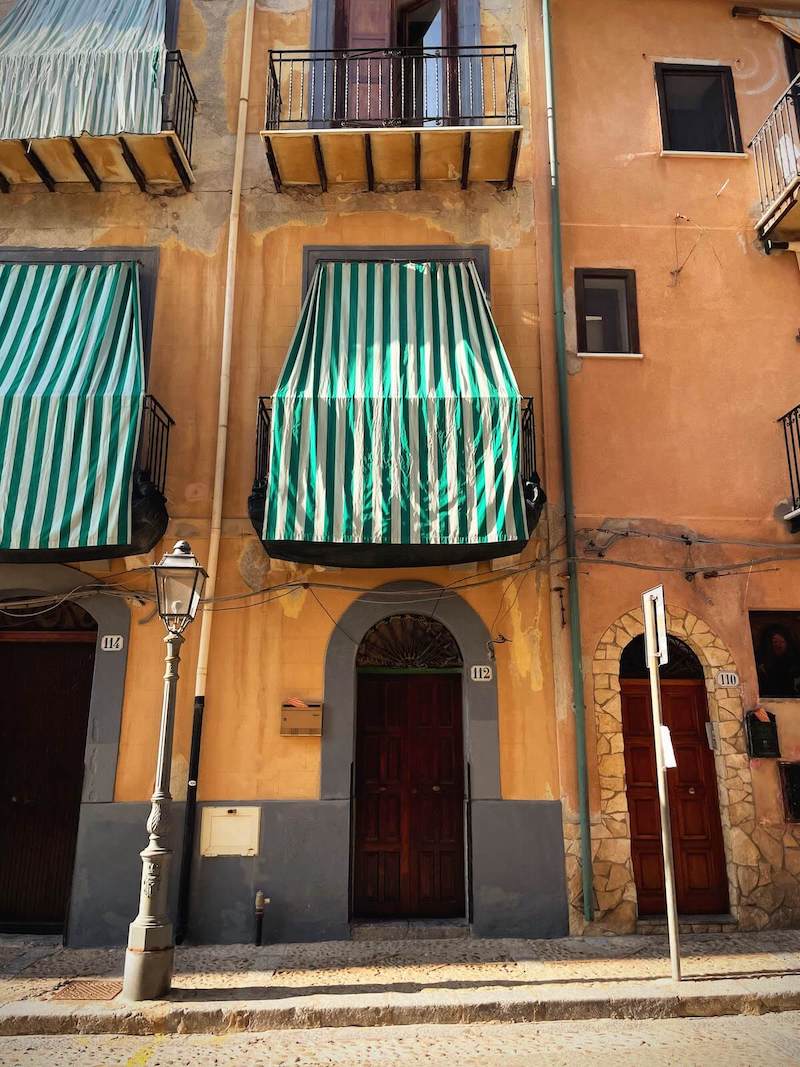
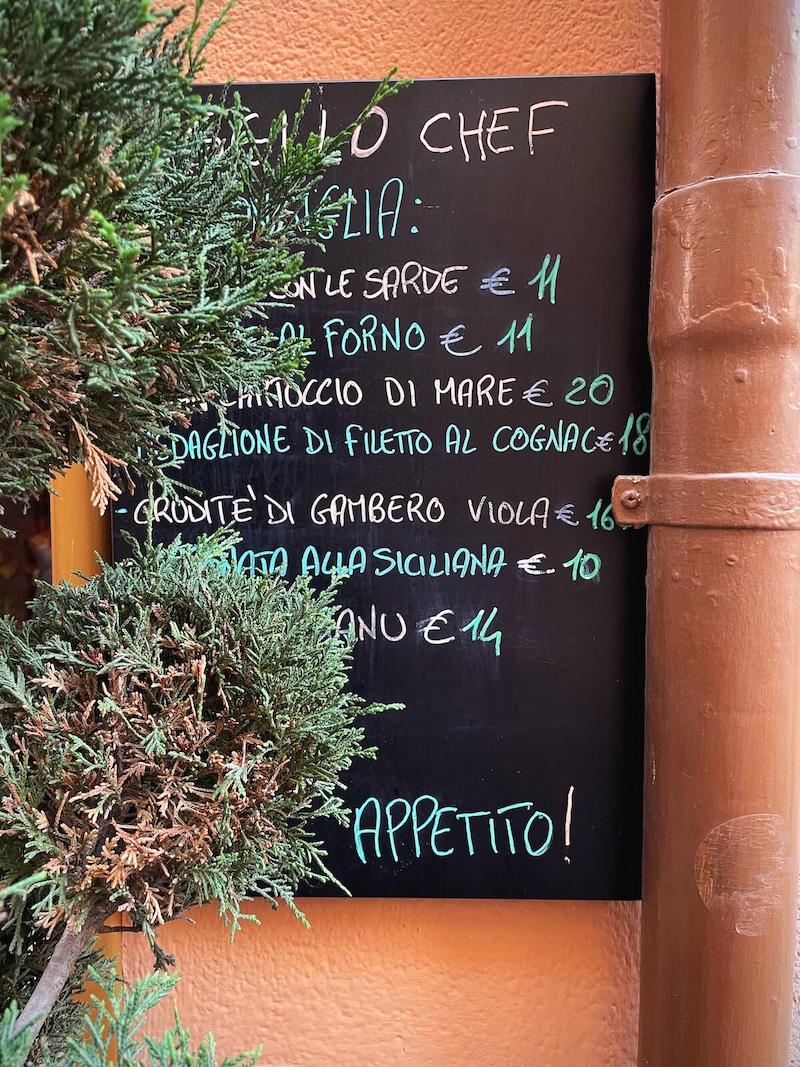
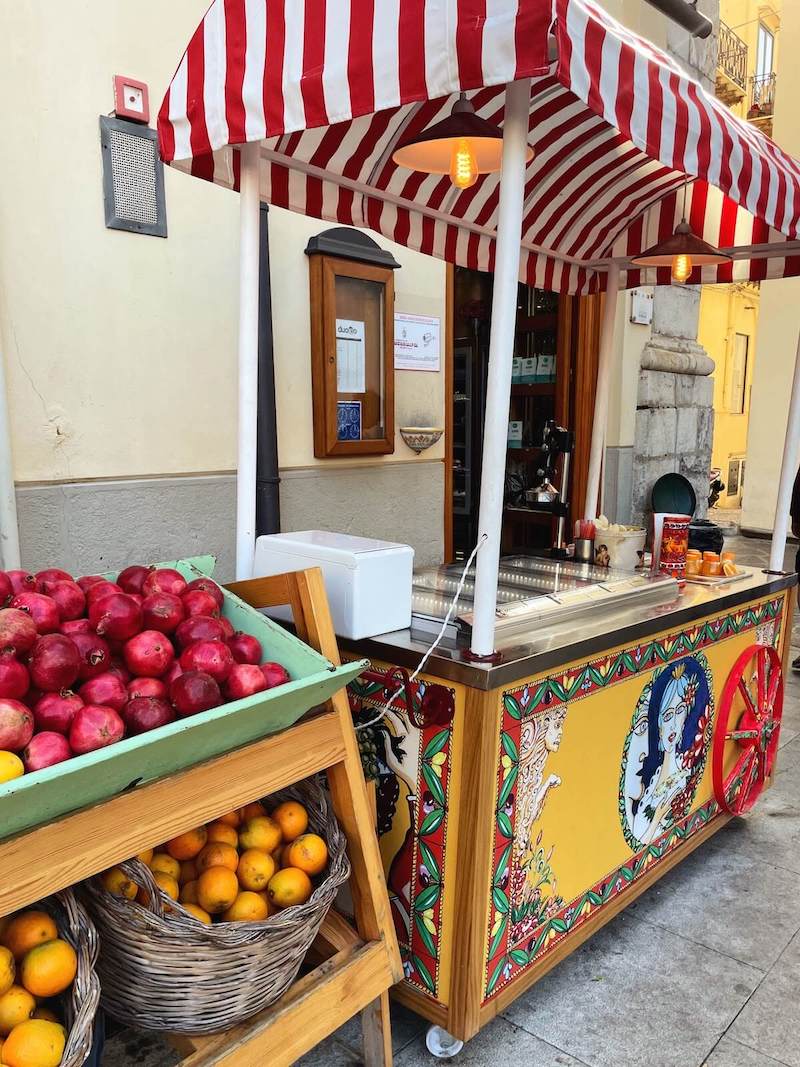
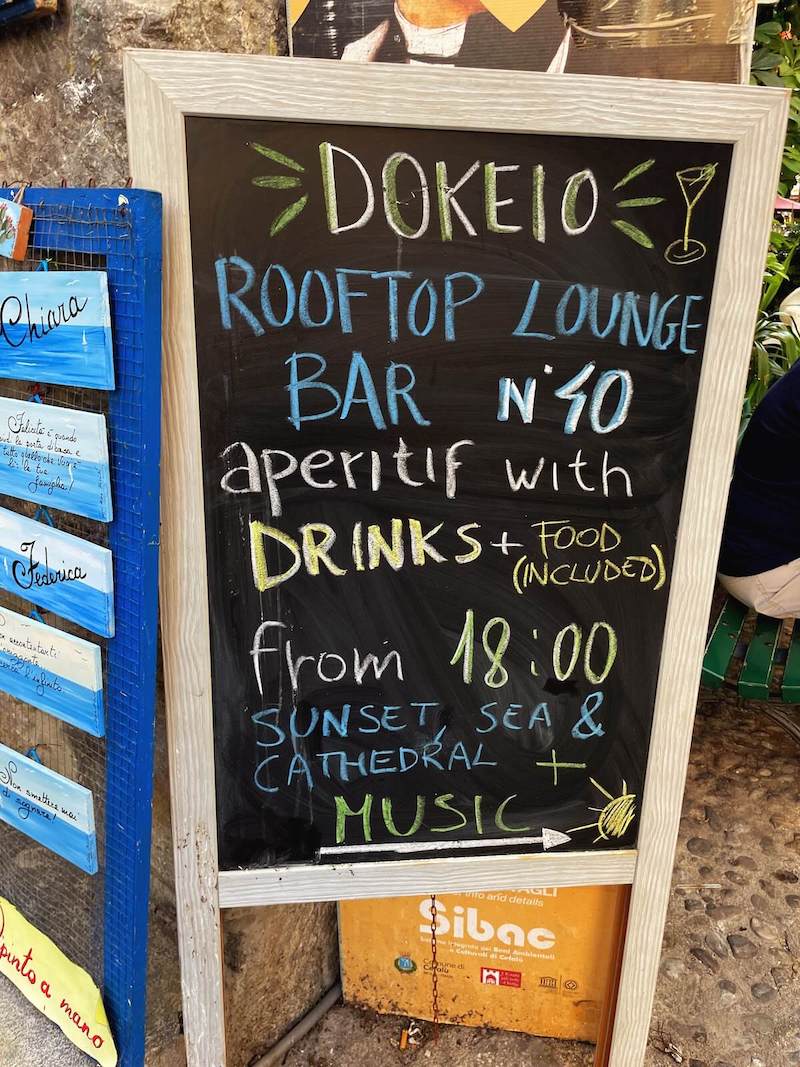
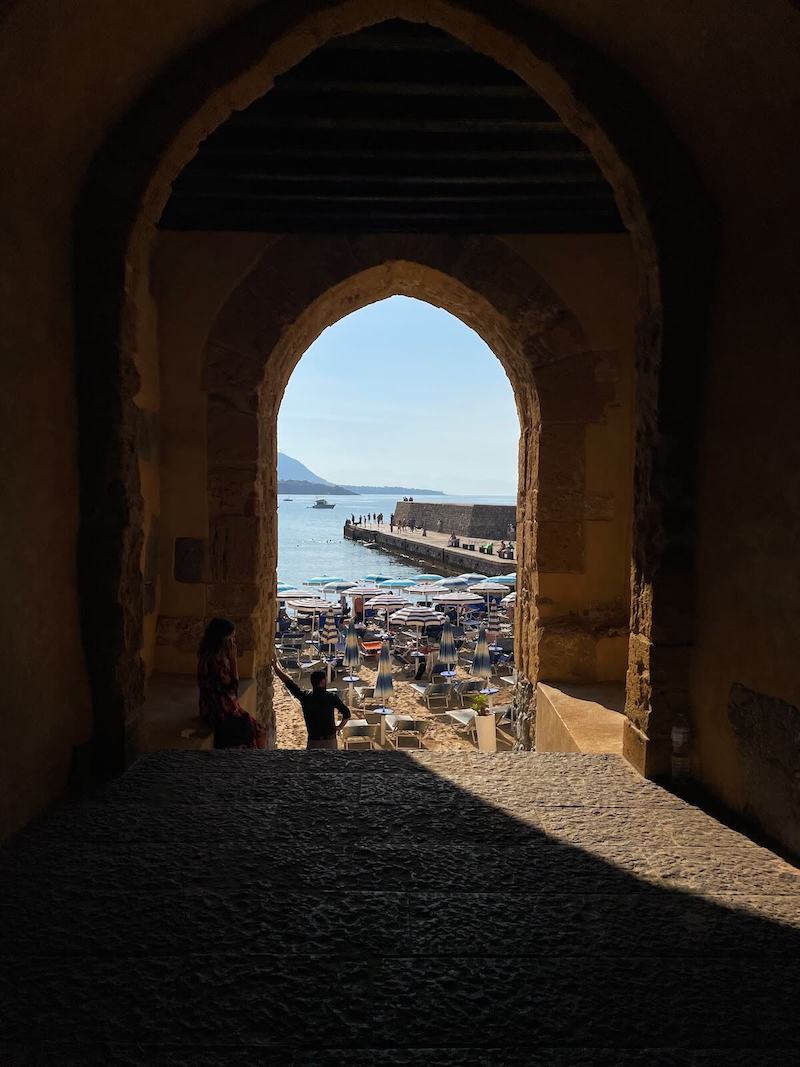
What to see and do
Cefalù is one of the best places in all of Italy for a combination of beach plus things to see and do.
The big historic draw in town is the Cathedral of Cefalù, one of several UNESCO World Heritage-listed Norman cathedrals in the area known for its mosaics. Along with Monreale and several churches in Palermo, these buildings are notable for their mixture of influences from different places and religions around the Mediterranean.
They’re also utterly dazzling – it’s worth popping your head around the door even if you’re not usually a church person. It dates back to the 12th century and the reign of King Roger II.
Also worth checking out in the old town is the Lavatorio, an old washhouse built on the River Cefalino (which is said to have sprung from the tears of a nymph who accidentally killed her lover). It’s just off one of the main pedestrian streets in the old town, look out for a sign and then take the steps down. You can see the carved rectangular tanks which would have been used to scrub clothes.
There’s a small local museum called Museo Mandralisca which houses some antiquities.
If you’re feeling active, you can hike up La Rocca to the castle. The ruins up here are even older than the town – the fortress ruins were constructed around the 7-8th century AD, and there’s a megalithic temple to Diana (5th century BC), and a cistern (9-8th century BC).
Paths up La Rocca are marked on Google Maps but entrance is subject to opening hours and a ticket (around €4, card payments are possible but it’s best to have cash on hand too). It’s a steep 45-minute walk with rocky parts, best to wear appropriate footwear (not flip flops) and avoid the hot midday sun.
If you have a car there are lots of places to explore in the Madonie National Park such as the Sanctuary of Gibilmanna, Gangi, and Castelbuono.
You’ll find the full gamut of activities on offer in Cefalù, watersports on the beach as well as higher-octane activities such as quad-biking and paragliding.
On the other side of La Rocca, Torre Caldura is the photogenic ruin of a watchtower atop craggy sea rocks on a small headland. The tower is not open to the public but it’s a scenic area for kayaking.
There’s also a harbour and marina in this part of town with lots of boat trips available, including fishing and snorkelling.
In the summer months, it’s also possible to take an excursion to some of the Aeolian Islands. Check with the travel agencies for more information – they usually have timetables posted outside.
Bus excursions are offered too, to Palermo, Agrigento, and Etna.
Nearby Santo Stefano di Camastra is one of Sicily’s main towns for the production of ceramics, and worth a visit for souvenir shopping. It’s a short train journey to the east.
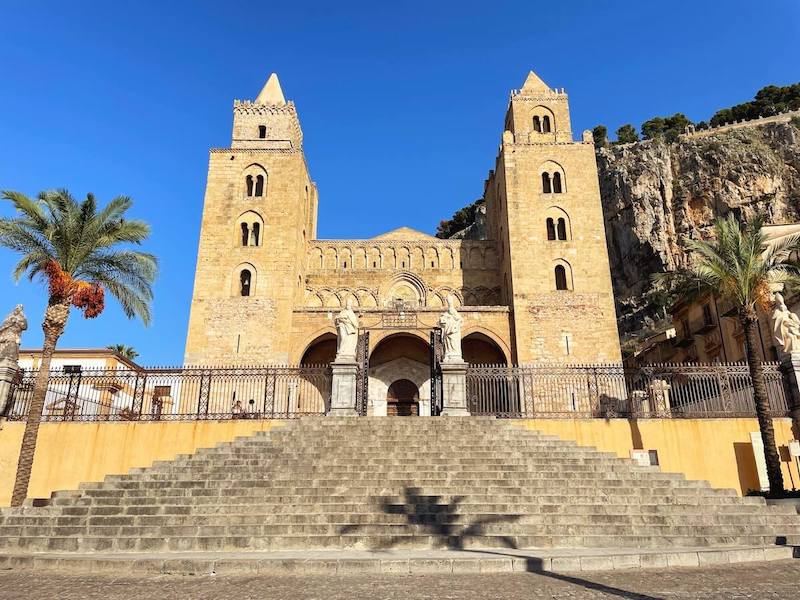
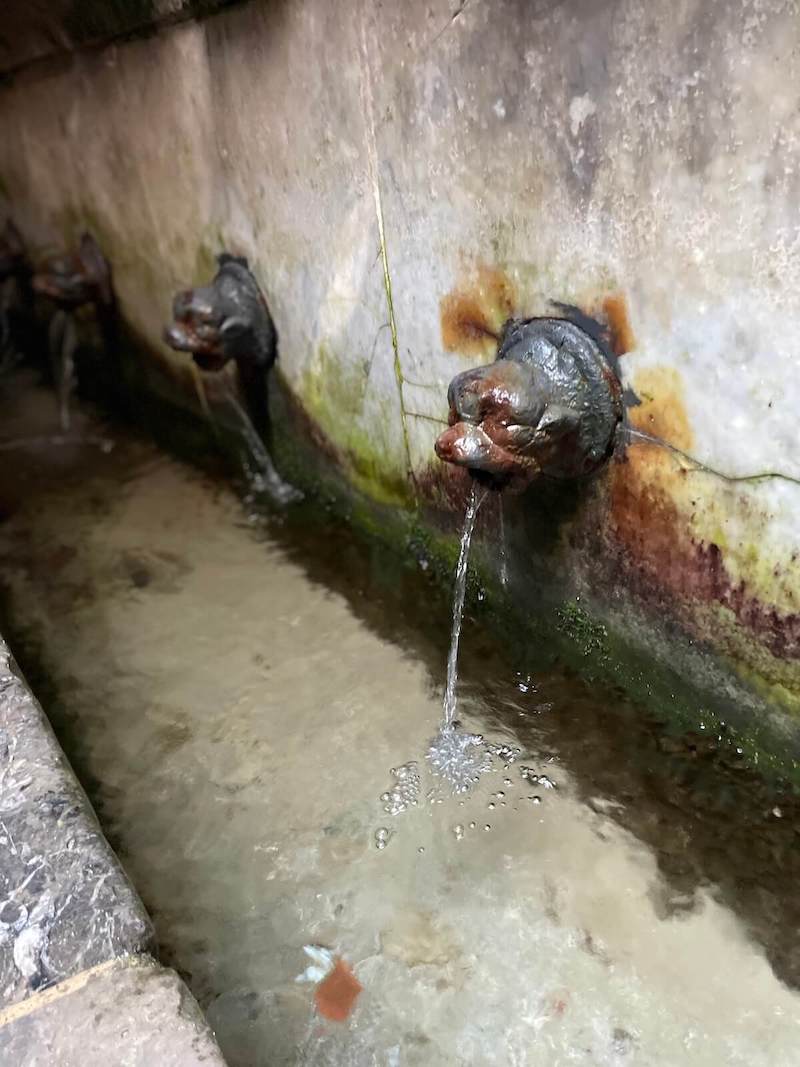
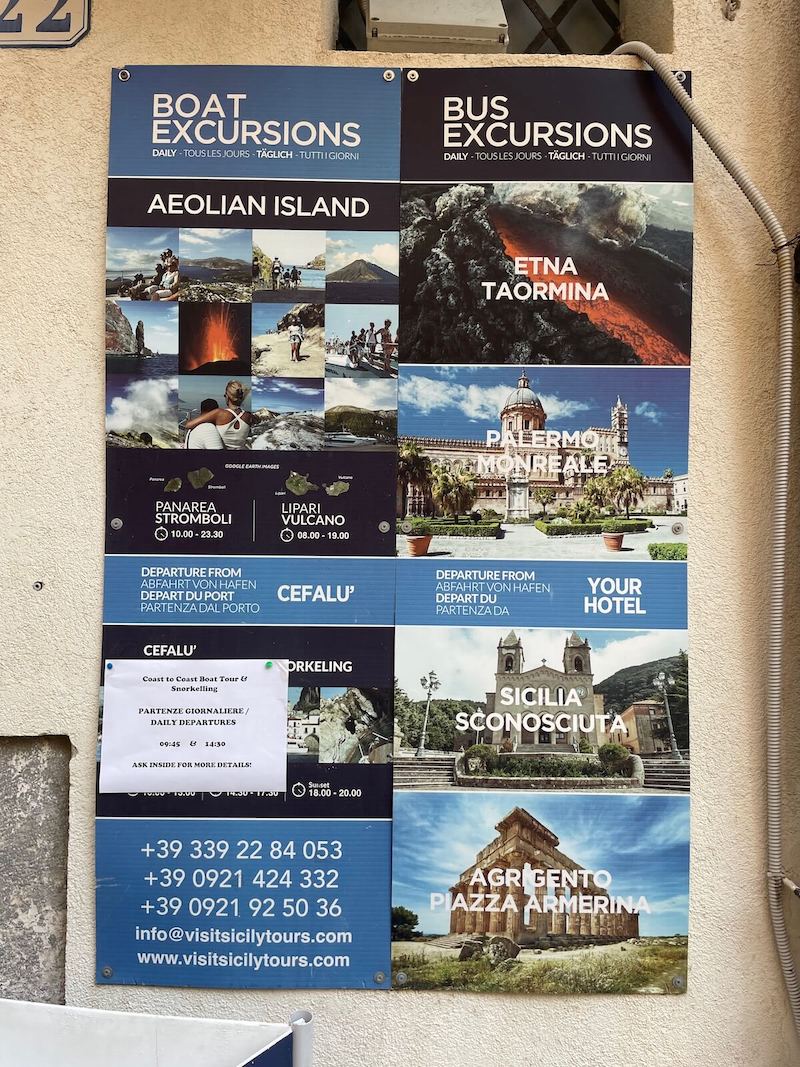
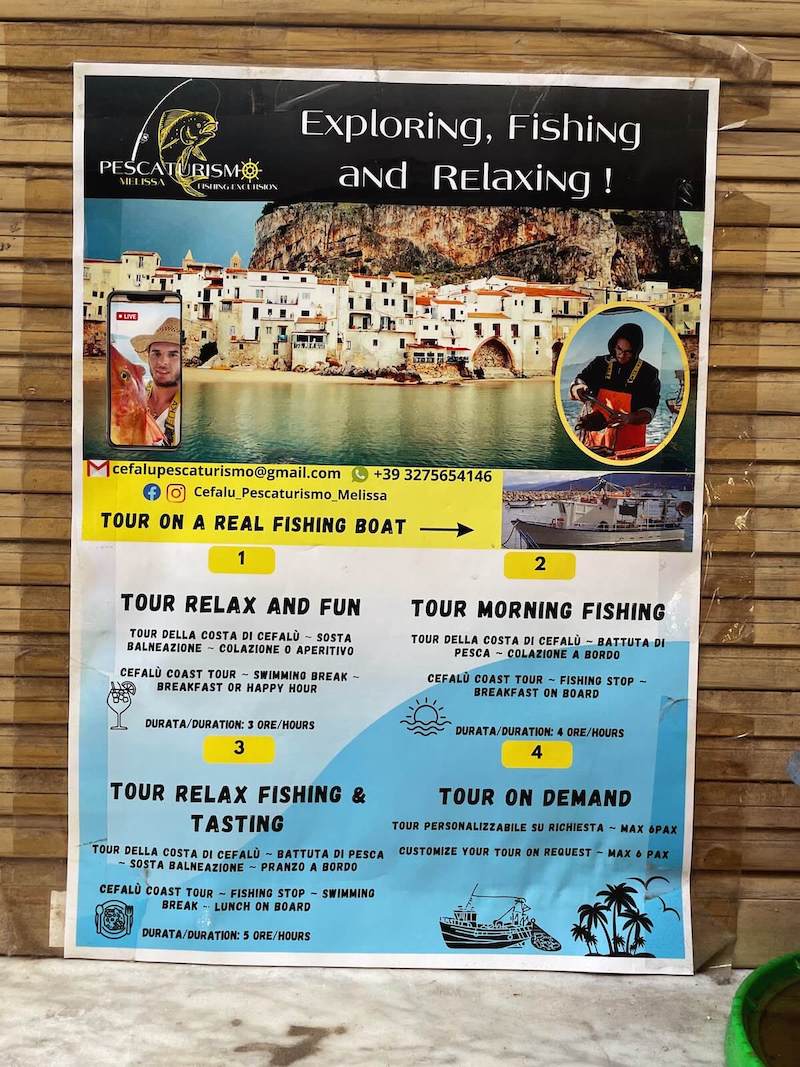

What’s the beach like?
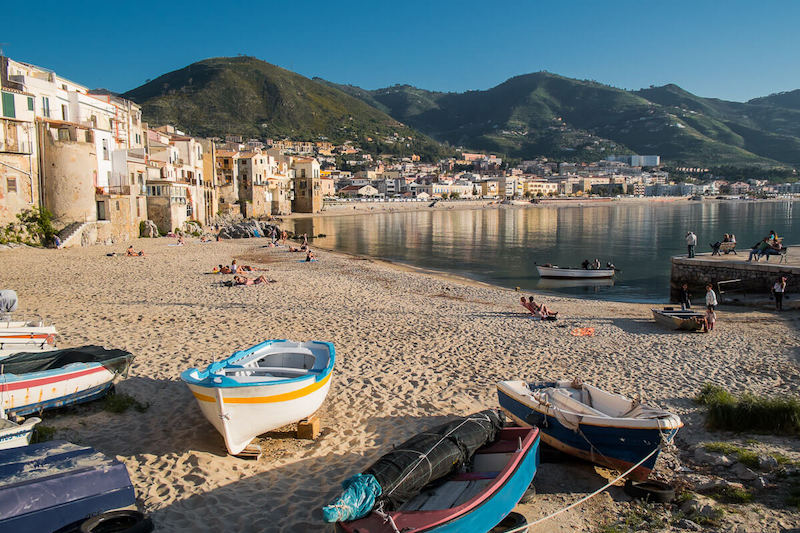
The beach at Cefalù is one of the most beautiful in Sicily thanks to its fine golden sand, calm seas, and unique backdrop.
It’s around 2km in length, you can divide it into two halves for practical purposes. There’s the section underneath the old town, which is picturesque but can be narrow and crowded (with both people and fishing boats). But a stroll along this part of the beach is essential.
Further south, beyond the old town, the beach widens substantially – enough for 6 or so rows of sun loungers.
There are a few free sections of the beach but most are occupied by lidos, Italy’s version of the beach club. You’ll pay for a pair of loungers but also get access to changing rooms, showers, and toilets, sometimes there’s a snack bar, pedalo/kayak rental, and a lifeguard in the summer. The lido areas tend to be cleaner, too.
Lidos are mostly unpretentious and geared towards family days out, although some of them do have a tiki-bar vibe. Expect them to be very busy in the summer and book online in advance if possible.
There are hawkers on the beach during the summer, and stalls selling jewellery and other wares.
No other sandy beaches are within walking distance of town, much of the surrounding coastline is rocky. If you have a car there are a few pretty coves at Settefrati and Capo, or you can visit the long sand-and-shingle beach at Campofelice de Roccella.
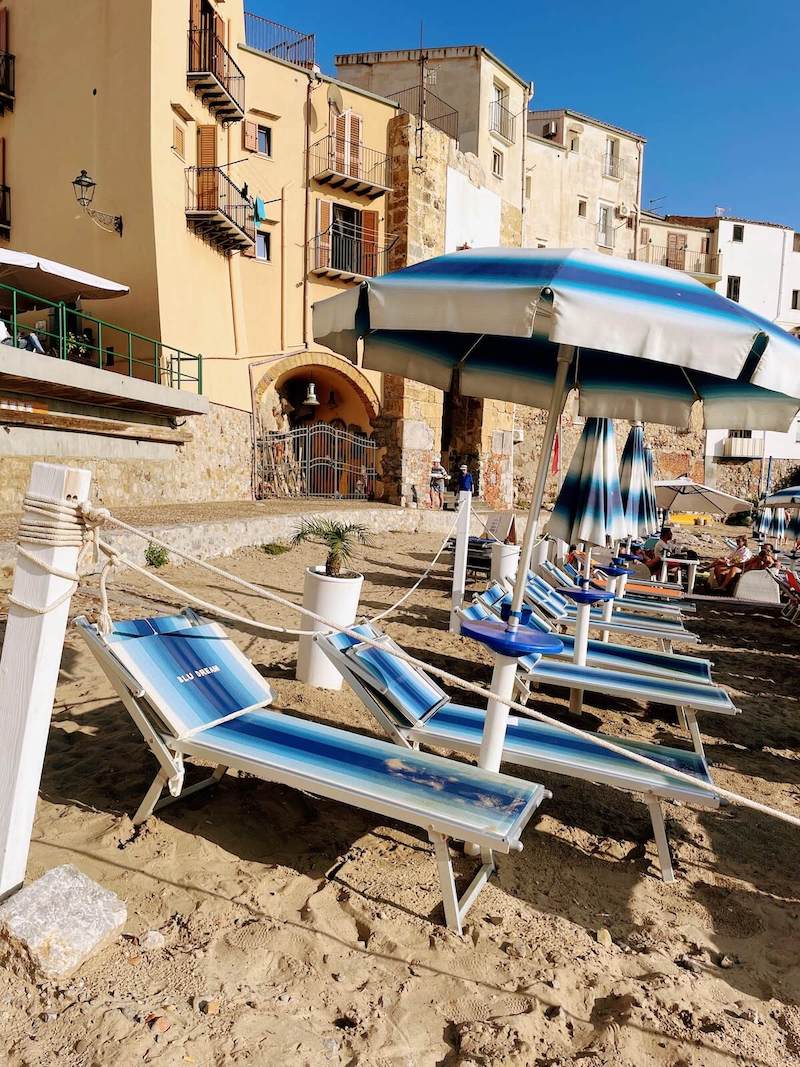
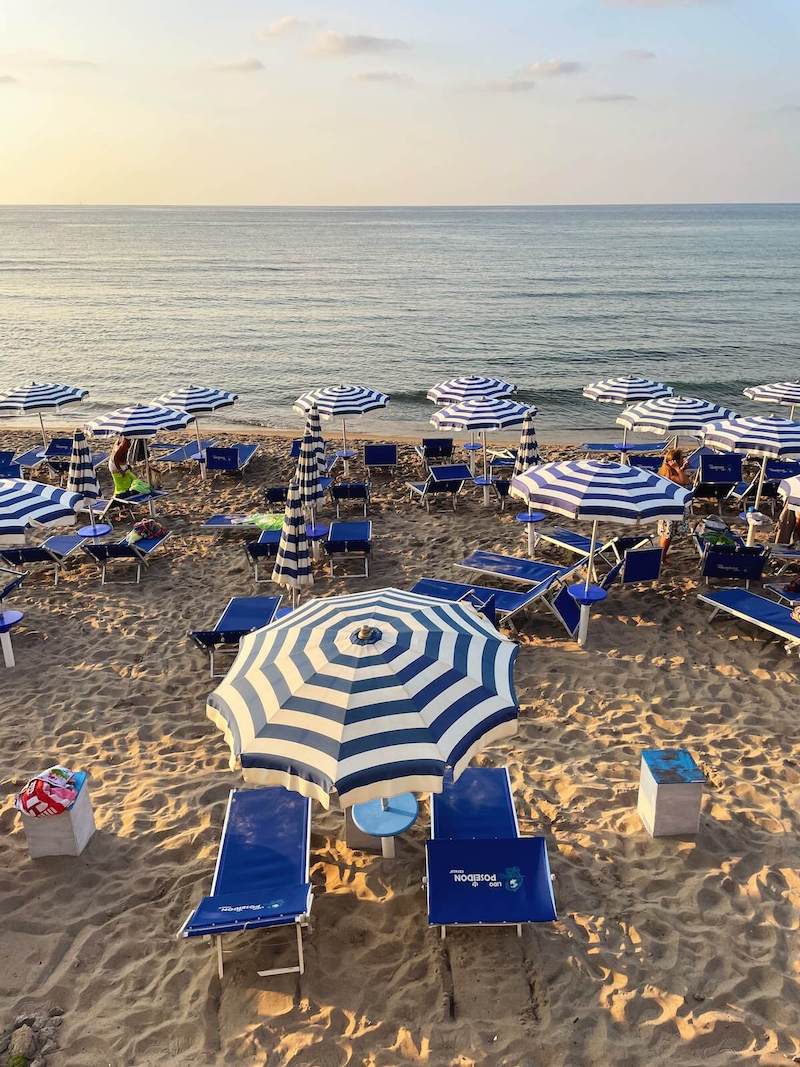
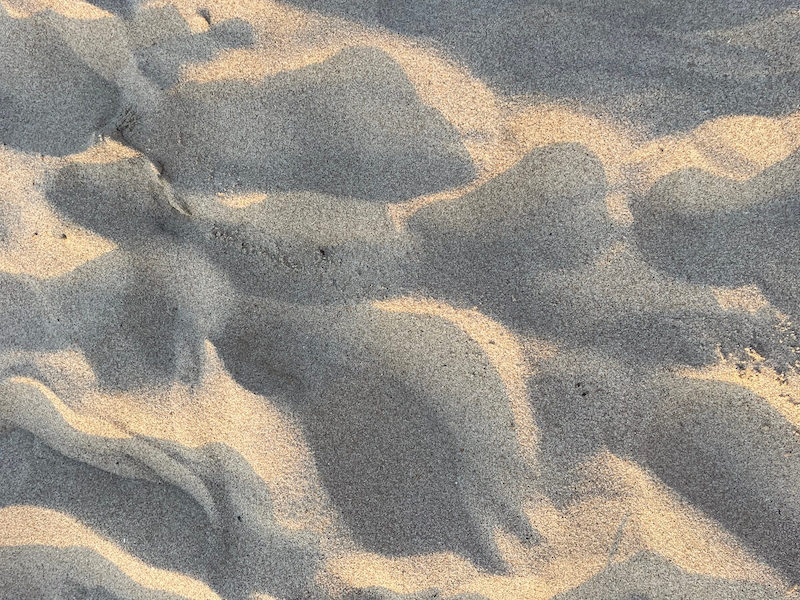
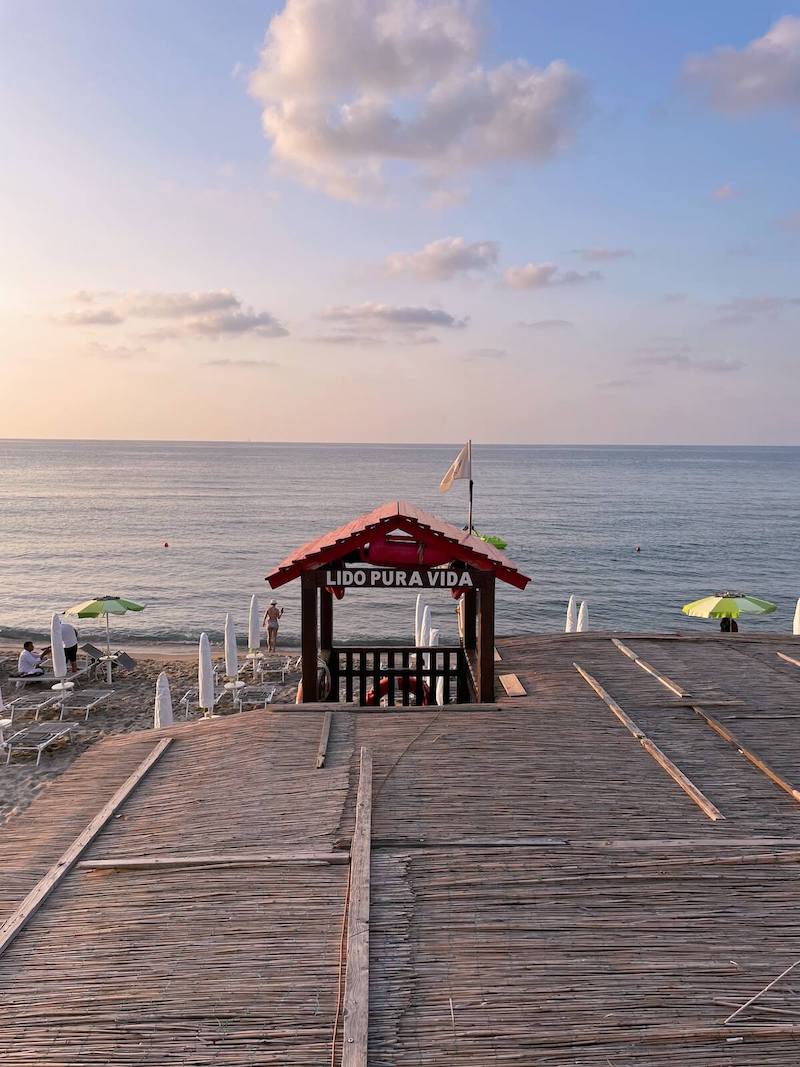
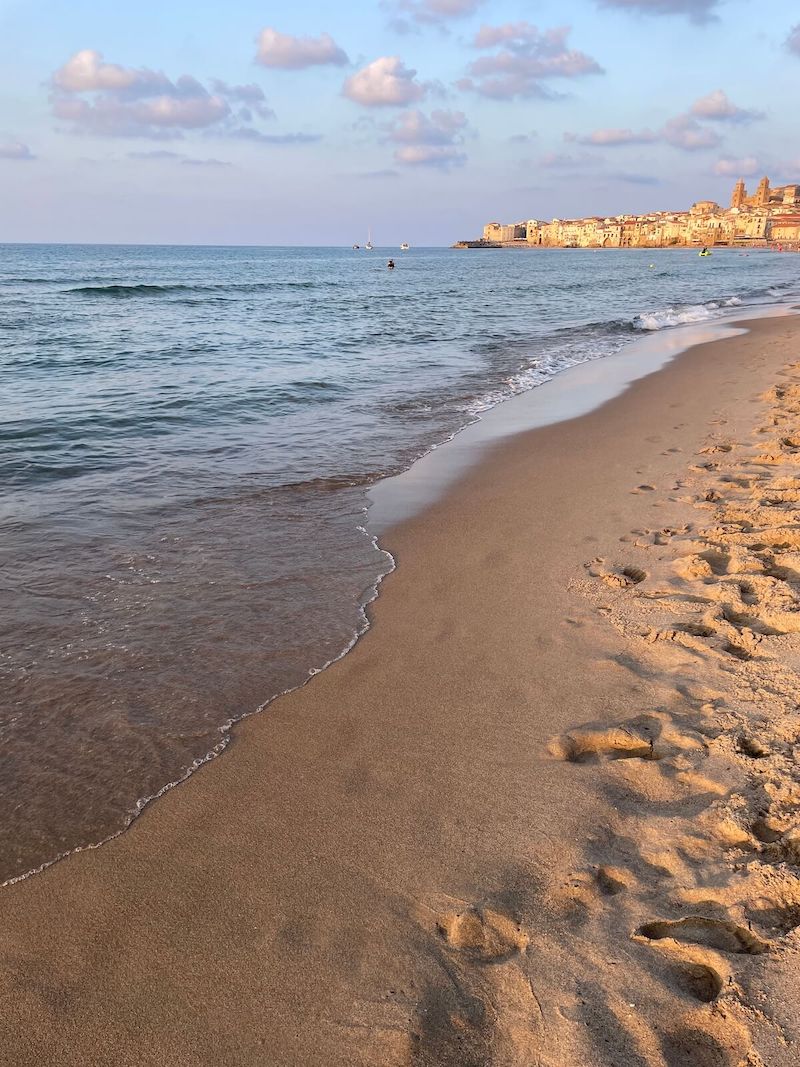
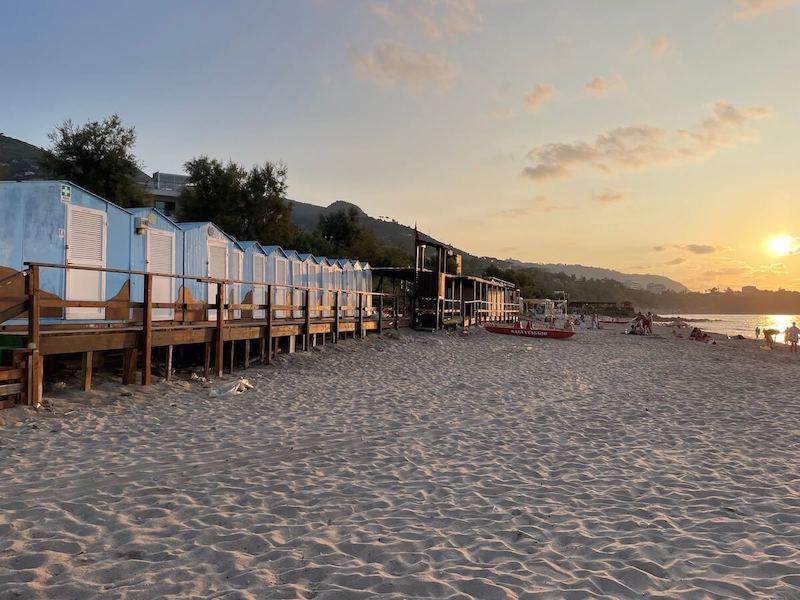
How to get there and around
Cefalù is just over an hour and a half by car from Palermo International Airport.
The train link between Cefalù and Palermo is popular and fairly frequent – if you’re visiting at a busy time it’s best to buy your tickets a little in advance as Cefalù is on the line that connects Palermo with mainland Italy. It often books out, especially around weekends when students are likely to be travelling.
If you want to buy your tickets online I recommend using the Trenitalia site and not a third party like Omio as there’s a convoluted validation process for regional tickets that doesn’t play well with other vendors.
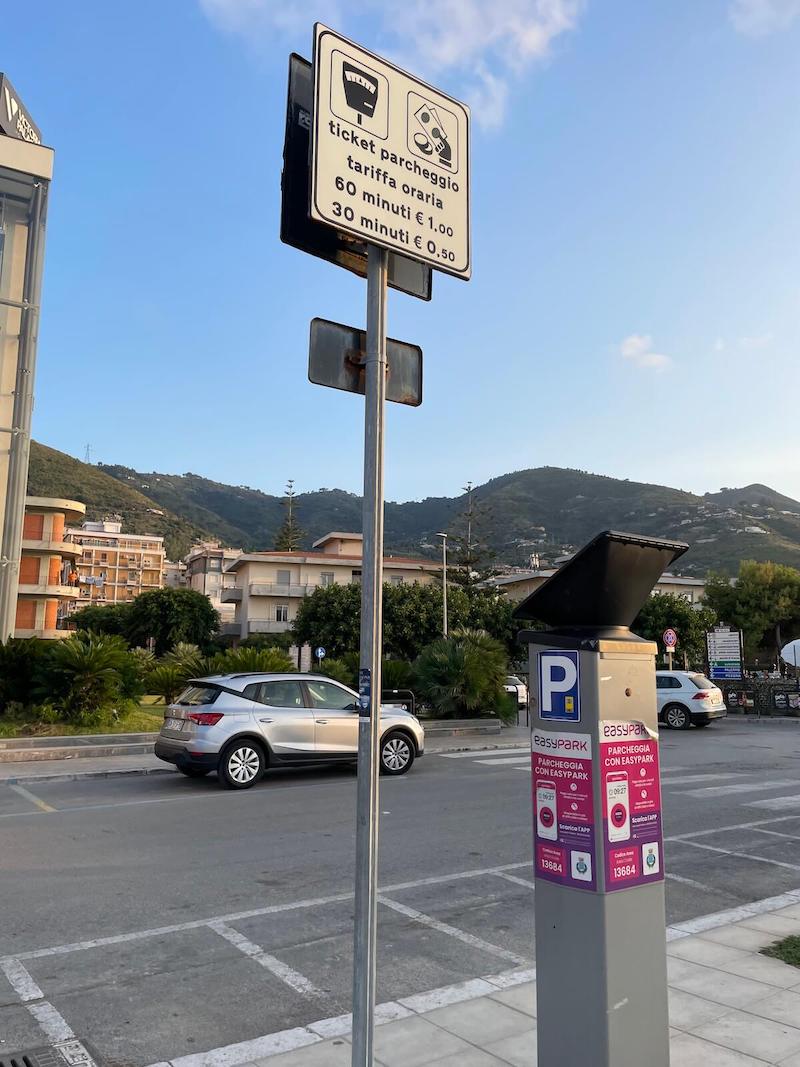
There’s plenty of parking in the newer parts of town, including a large lot at the eastern end of the beach where it leads to the old town (next to Astro Suite Hotel).
You’ll need to get there early for the good spots though.
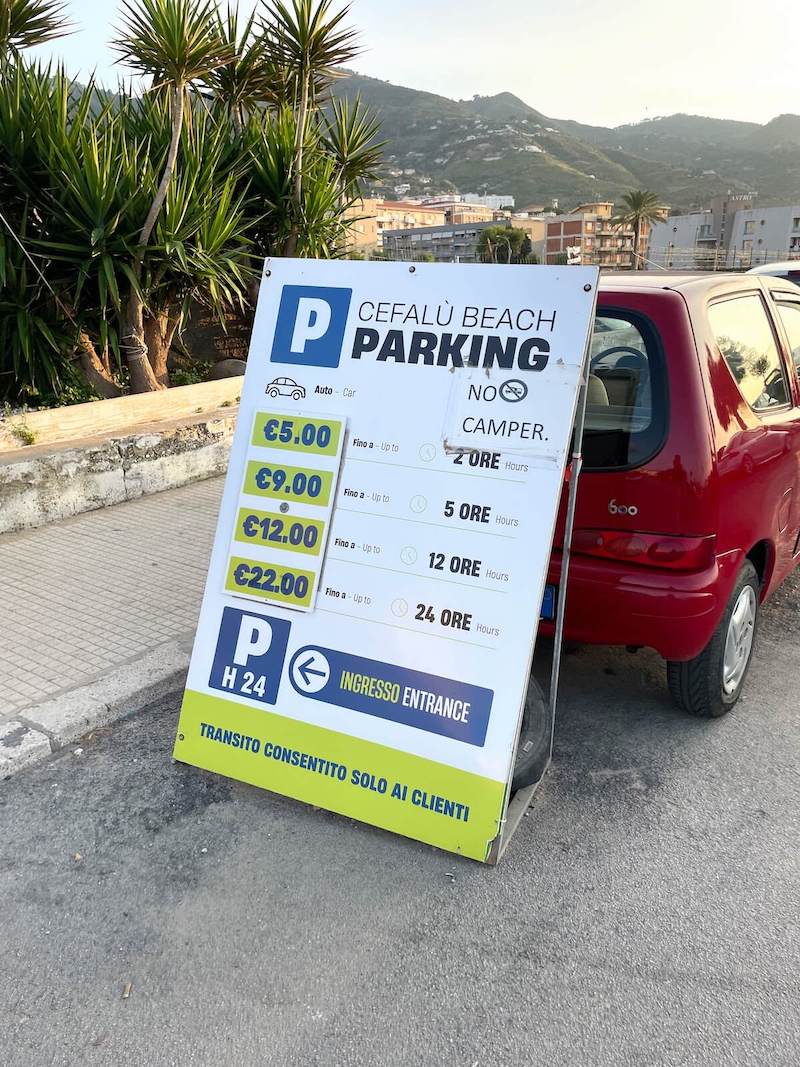

Cefalù is mostly flat, though there are a few hilly bits (mainly in the new parts). The old town is all at one level and the streets are cobbled.
The train station is a 5-minute walk uphill and the most common route involves a strange walkway. It’s worth noting the road so you can find it again!
Some steps are required to get down to the beach from the road.
Prices
Prices in Cefalù are average for Italy. You may find a few overpriced (and disappointing) restaurants and bars on the main tourist drags, but there’s plenty of choice. Same goes for the lidos/sunloungers.
Cefalù attracts plenty of the mid-market local family crowd so there’s plenty of traditional accommodation at that price point, but with an increasing number of 4-star hotels too. It doesn’t have Taormina’s high prices (nor its luxury hotels).
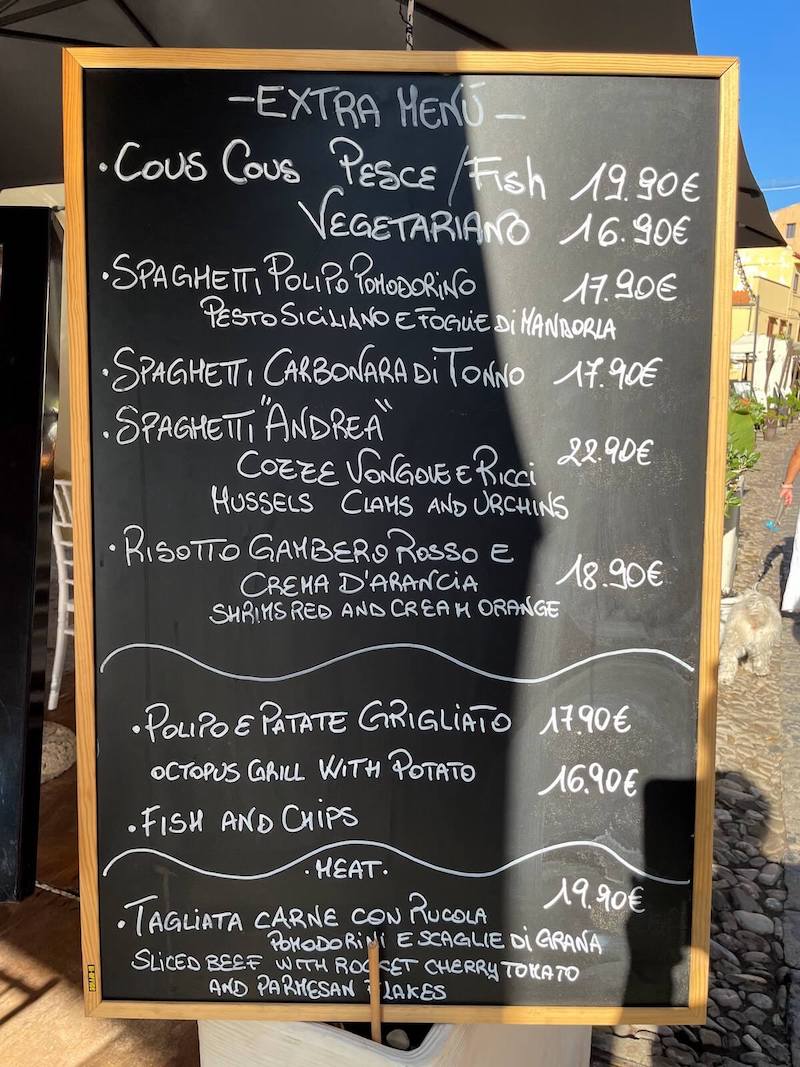
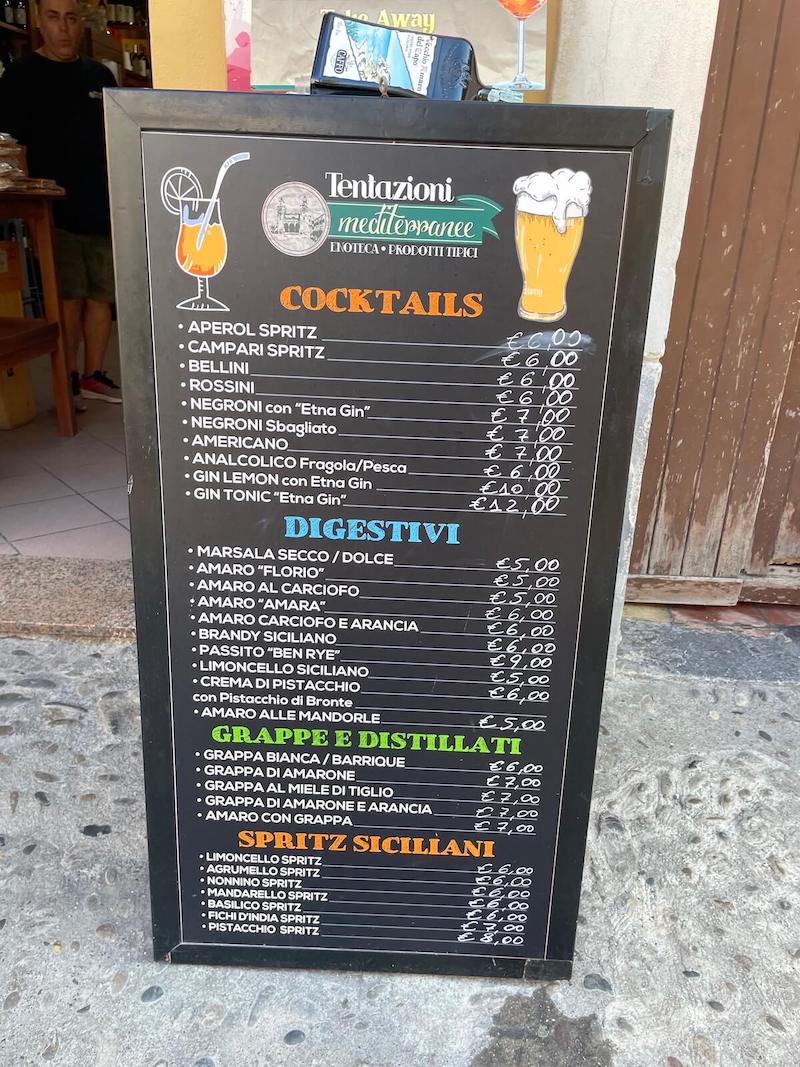
Best Places to Stay in Cefalù
Most of the best places to stay are a short distance from the old town.
5-star Le Calette N5 is the best luxury hotel in Cefalù and boasts impeccable views, chic decor, and a private sandy beach at the same location as its 4-star sister hotel La Calette Garden & Bay.
Hotel Kalura is an affordable and fun 3-star resort hotel with a small private beach (though lots of steps are involved).
All of these are a 25-minute walk to the old town around the promontory. The scenery here is quite stunning too.
Closer to the main drag, the 4-star Hotel Alberi del Paradiso is at the back of town and has a spa, a large landscaped pool, and shuttles to the beach.
4-star Calanica Resort is out to the west beyond Cefalù’s main beach, but it does sport a small private beach.
Within the old town, accommodation is mostly traditional B&Bs – try Coresi for simple modern rooms near the cathedral.
For villas and vacation rentals in the area, I recommend checking VRBO.
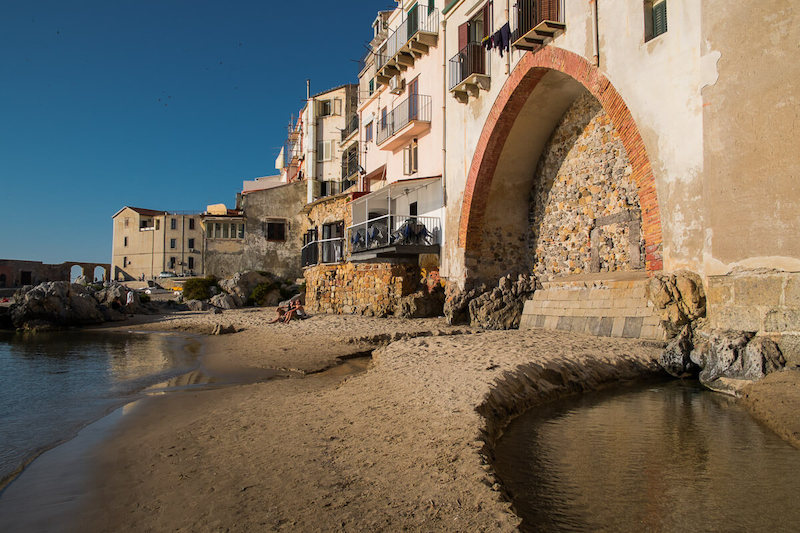
Read more:
Where to Stay in Sicily: Ultimate Beach Resort Guide
10 Most Beautiful Beaches in Sicily
Image credits: All images © The Mediterranean Traveller

